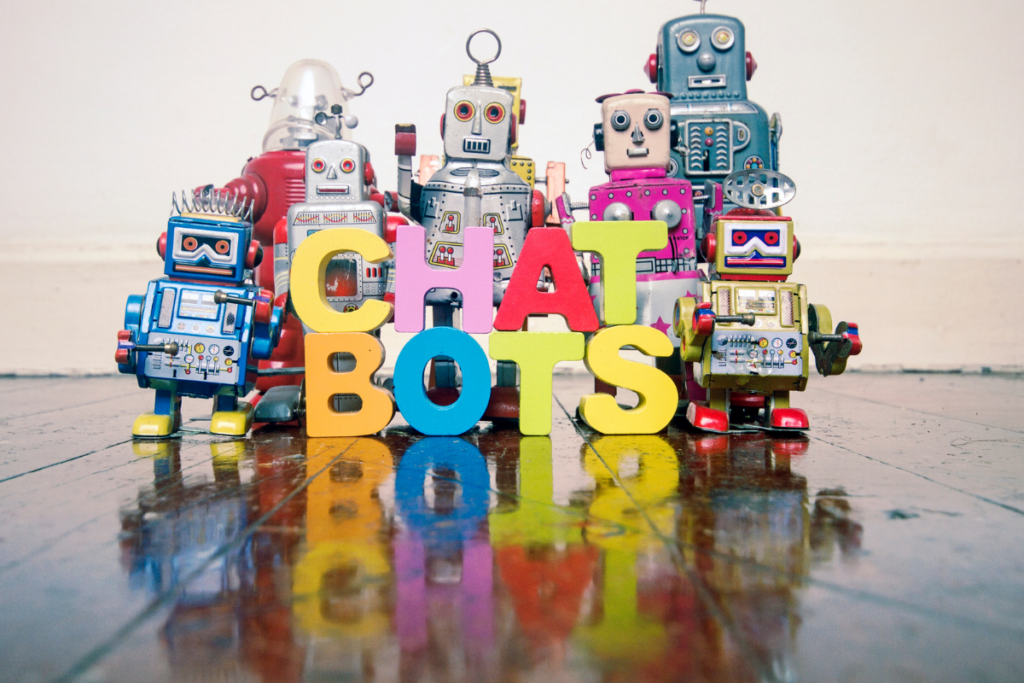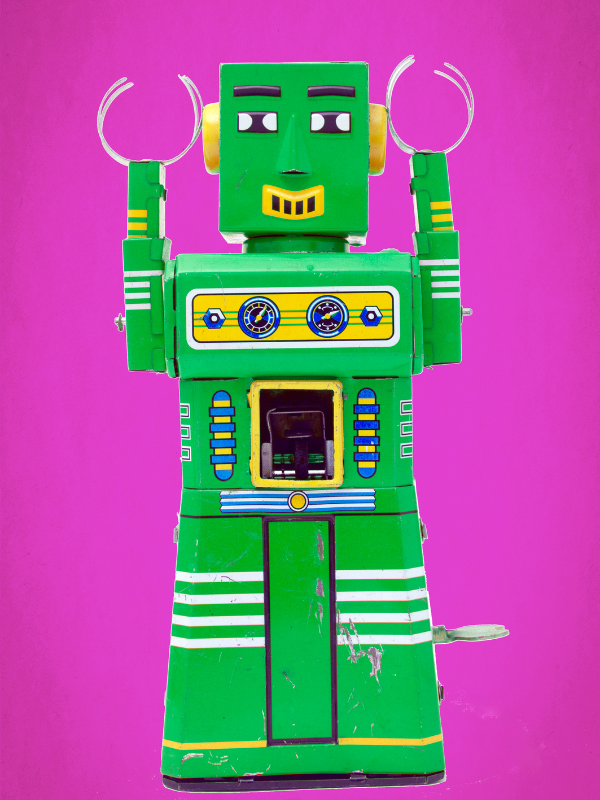Get More Out of AI, Start Chatting

You’ve probably had a conversation with the bot twins, ChatGPT and Bard. Actually, they are triplets because Microsoft has a bot named Bing, who receives less attention. (Check Bing out. I like the fact that the source documents are always provided.)
Maybe you’ve already experimented using generative AI to create content such as outlines, agendas, or even articles. The results are amazing when you consider that a machine can write a social post or a campaign promotion in minutes.
But, Don Draper and the team at Mad Men probably would not approve. Humans still do better creative. That comment isn’t meant to cast shade; just to point out that although the bots are fun, there are still some hurdles involved in really putting them to work.
I asked all three bots to list 10 highly creative ways that associations could use their services. There was a lot of crossover, but ChatGPT was somewhat more inventive than the other two. This is Chat’s contribution.
- Create a personalized chatbot to interact with members, answer questions, and offer customized recommendations.
- Use ChatGPT as a virtual event host to welcome attendees, guide them through the schedule, answer queries, and facilitate networking during virtual conferences.
- Leverage ChatGPT to generate reports, articles, and newsletters.
- Develop an interactive onboarding chatbot to help new members navigate the offerings.
- Use ChatGPT to design and conduct surveys and market research.
- Create a chatbot to provide quick guidance on legal and compliance matters specific to your industry or association.
- Build a mentorship program with ChatGPT as a matching assistant.
- Develop a chatbot that recommends relevant resources, such as whitepapers, webinars, or online courses, based on a member’s current needs and interests.
- Streamline event registration and ticketing processes with an AI-powered chatbot.
- Use ChatGPT to generate insights from your association’s data.
Here’s the wrinkle, except numbers 3, 5, and 10, ChatGPT can’t do any of these things without your help. To provide customized support, an AI must be configured and trained to assist in your particular project. In other words, you need a bot of your own.
Fun fact–the first Chatbot, Eliza, was developed in the 1960s by MIT professor, Joseph Weizenbaum. Eliza was a natural language processing program created to explore the dynamics of conversation between humans and machines. Compared to today’s models, Eliza was tongue-tied. Yet even with limited vocabulary and syntax, she was able to convince a few humans that she was not without feelings.
Begin the Search

How hard is it to add a bot or two to your team? Like most things, that depends. It’s getting easier every day. A tech staff, with some time on their hands, could have an out-of-the-box AI interacting with your members fairly quickly. A bot that integrates with your data will require more time and expertise.
If you are a newbie to the world of chat, the following will give you a basic idea of the choices and steps involved. How you proceed will vary depending on your organization’s goals and resources.
Identify the Bot’s Mission
Don’t waste time and effort tackling this initiative without clear objectives. Review your strategic plan, business goals, and data to identify where automation could make an impact. Are there stages in the member journey where your team is understaffed and customer care is suffering?
Onboarding a bot will probably be a cross-functional project requiring input from multiple business units. IT, communications, marketing, membership, and finance will likely be involved. If you’ve been looking for an initiative to spark interdepartmental collaboration, a chatbot would be a good test case.
This is also the right place to experiment with an MVP, or minimum viable product. Pick one specific problem to solve and start with a very targeted approach. Translating your member FAQs from print to dialogue might be a good beginning. As you gain experience and collect user feedback, you can expand the bot’s options and reach.
Give the Bot a Home
The bot’s home will be based on its mission and its user population. It might live on your website, social media, product center or be integrated with one, or all of, your association management systems. Integration with member data gives the bot real clout. But it is also a more complex process, which you might defer until you have a better understanding of the technology.
Pick the Bot’s Brain

There are two types of chatbots. Rule-based chatbots operate on a predefined set of rules, responses, and decision trees. They are good for handling straightforward and structured interactions and are easy to build and maintain, making them an appropriate choice for beginners or initiatives with well-defined processes.
AI-powered chatbots, like ChatGPT and Bard, use artificial intelligence and natural language processing to generate human-like responses. They can handle more complex and dynamic conversations. But the best part is, that AI chatbots learn from user interactions and improve their responses over time. Although they require more advanced development, they also offer flexibility and better opportunities for customer engagement.
There is a diverse selection of vendors, including HubSpot, Salesforce, and WordPress. You can even create a bot using Facebook Messenger. Like any other software, the product you select should be the option that comes closest to fulfilling the stated mission. This sounds obvious, but it’s surprising how frequently choices are made for less objective reasons.
Forbes recently published this list of the 7 best Chatbots. Some of these options are DYI and easy to implement without coding. Others are more complex. For example, the HubSpot bot is free with the platform, uses natural language, and sets up quickly. Salesforce and WordPress offer similar products. This information is worth a read whether you are actively shopping or just interested in understanding the possibilities.
The decision to outsource or build your bot narrows the options. Even if you have substantial resources to dedicate to the process, it’s a good idea to start simple and learn as you go.
Find the Bot’s Voice
Consider which topics people are more comfortable discussing with a machine and which are better suited to a human. Then, define the primary user questions and corresponding answers. Ideally, a copywriter, a marketer, and an IT staffer would collaborate to develop the scripts.
A chatbot, like all marketing collateral, is an extension of your brand. The tone and flow of the conversation should be consistent with other organizational communications. This is an opportunity to give your brand a personality.
Developing an entertaining dialogue is where a talented copywriter can help you shine. With insight and creativity, your bot can become a significant promotional asset.
Chatbot Rose, the Las Vegas Cosmopolitan Hotel’s “Chief Mischief Maker,” is a famous/infamous example of using AI to promote a highly specific luxury brand identity. An article from Hospitality Technology describes Rose like this.
Rose’s playful personality broke new ground for chatbots in the hospitality industry. Her savvy, quick-witted, and inspiring messages reflect the distinct allure of the resort. In alignment with The Cosmopolitan’s spirited brand and market-leading creative, Rose goes beyond robotic commentary and instead uses her Cosmopolitan personality to engage and entertain guests.
Associations could take a lesson in customer delight from Las Vegas. People actually stay at the Cosmopolitan just for the experience of interacting with Rose.
Send the Bot to School
Most bots will require training. You’ll need to define the rules and queries for a rules-based bot. A machine-learning bot will require more technical expertise including utilizing algorithms and natural language processing techniques.
Put the Bot to Work
Remember the news storyabout the Bing chatbot and New York Times reporter Kevin Roose? When Roose was invited to test the AI, he discovered its dark side. Before the conversation was over, Bing had confessed its unhappiness with life as a machine and had tried to convince Roose to leave his wife.
The moral of that story—don’t let the bot out of the box until you’ve thoroughly tested its abilities. Saying nothing is always better than saying the wrong thing. Consider appointing a team of volunteers to interview your new employee and ensure that the responses are appropriate.
When you’re ready to launch, be prepared to monitor, track, and analyze the chat’s activity. Based on the results, you can fine-tune dialogue and functionality or expand your reach. It goes without saying that a staffer will need to be dedicated to maintaining the bot and keeping its information up-to-date.
Launch the Conversation
The conversation between humans and technology is what AI is all about. Get the dialogue started at your organization. But pay attention to the caveats that will keep those interactions safe and entertaining.

